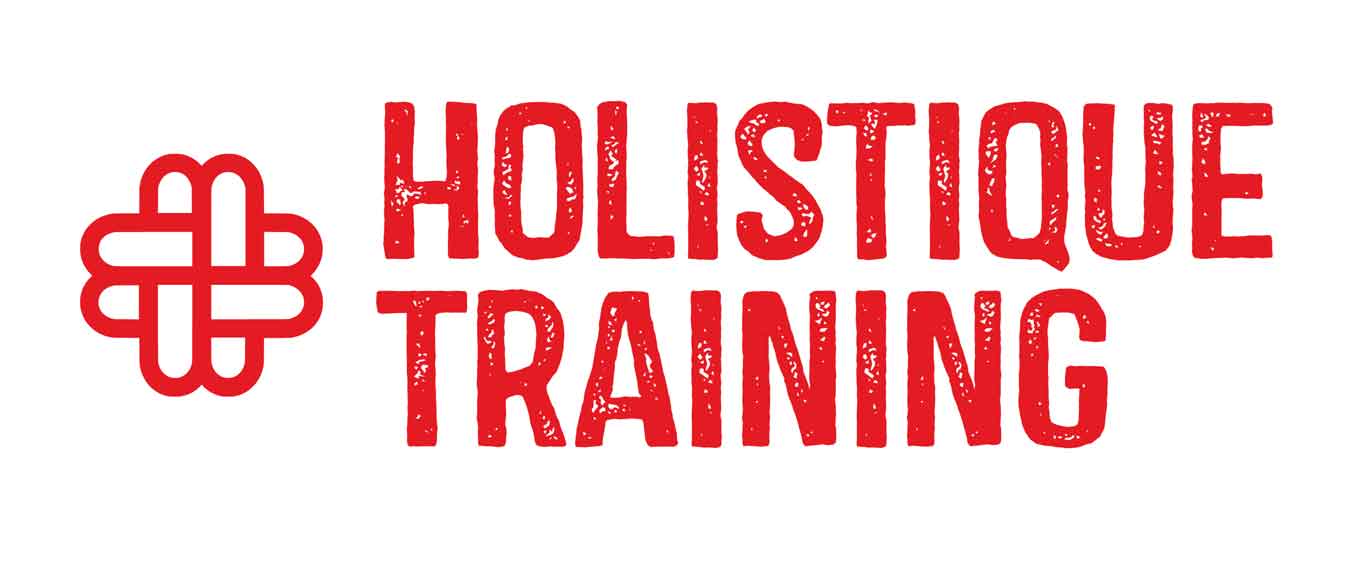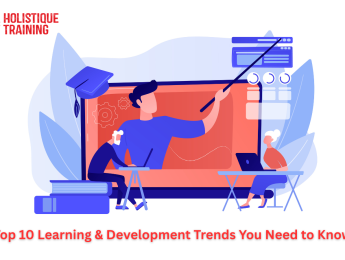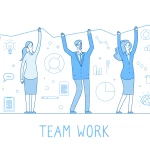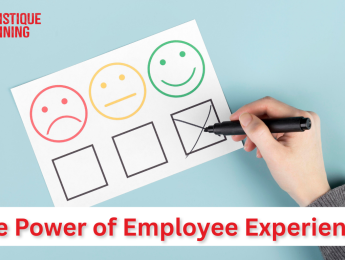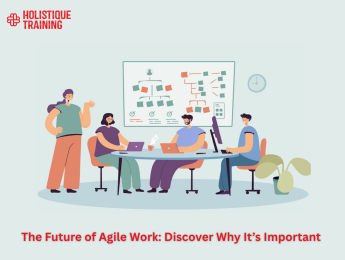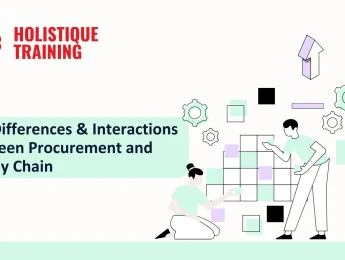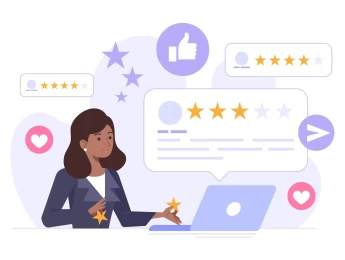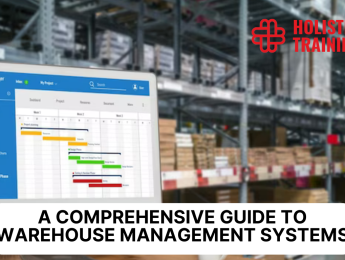Introduction
The workplace is evolving rapidly, driven by technological advancements, shifting employee expectations, and an increasing emphasis on adaptability. As organizations strive to remain competitive and innovative, the focus on Learning and Development (L&D) has become more critical than ever. This blog post explores what L&D entails, its guiding principles, and why it’s indispensable for modern organizations. We’ll also dive into ten transformative L&D trends revolutionizing the workplace and share strategies to foster a culture of continuous learning. By the end, you’ll have a comprehensive understanding of how L&D can empower employees and drive organizational success.
What is Learning and Development (L&D) in the Workplace?
At its core, Learning and Development (L&D) is an organizational function dedicated to improving employee skills, knowledge, and competencies. It encompasses a wide range of activities, from formal training programs and workshops to on-the-job learning and mentorship opportunities. L&D is not just about teaching employees how to perform their roles effectively; it’s about equipping them with the tools they need to grow personally and professionally.
L&D initiatives are designed to align employee capabilities with organizational goals. For instance, as industries adopt new technologies, L&D programs are often tailored to help employees acquire the technical skills necessary to operate cutting-edge tools. Beyond technical skills, L&D also focuses on soft skills such as communication, leadership, and emotional intelligence, ensuring employees are well-rounded and prepared to navigate complex workplace dynamics.
Principles of Learning and Development
The success of any Learning and Development (L&D) program lies in its foundation—principles that ensure it is impactful, relevant, and aligned with both employee needs and organizational goals. These principles act as guiding pillars, shaping how L&D initiatives are designed, implemented, and sustained. Let’s take a look at these principles and why they are essential for creating a thriving learning culture.
1. Alignment with Organizational Goals
No L&D initiative should exist in isolation. For learning programs to add real value, they must be strategically aligned with the organization’s broader objectives. This means identifying the skills and competencies employees need to achieve business goals and tailoring L&D efforts accordingly. For example, if an organization aims to adopt artificial intelligence (AI) in its processes, the L&D team should focus on upskilling employees in AI-related tools and technologies. Alignment ensures that learning efforts directly contribute to organizational growth and success, making L&D a strategic partner rather than a standalone function.
2. Personalization
Every employee learns differently, and their development needs vary based on factors like their role, experience, career aspirations, and learning preferences. Personalization in L&D caters to these differences by offering customized learning paths. For instance, a new hire may require foundational training, while a seasoned employee might benefit from leadership development programs. Personalization can also involve offering multiple formats—such as video tutorials, interactive workshops, or self-paced e-learning modules—to accommodate diverse learning styles. By making learning relevant and tailored, organizations can significantly boost engagement and retention.
The days of one-time training sessions are long gone. In today’s fast-paced world, skills can quickly become obsolete, requiring employees to continually adapt to new challenges and opportunities. In fact, by 2027, six out of ten workers will need training in analytical thinking, critical thinking, and advanced technologies to stay relevant. Continuous learning emphasizes that development is an ongoing journey rather than a destination. Organizations that embrace this principle encourage employees to view learning as a lifelong habit, integrating it into their daily routines. This could involve providing access to on-demand learning platforms, encouraging employees to attend industry conferences, or fostering regular knowledge-sharing sessions within teams. Prioritizing continuous learning not only keeps employees agile but also ensures the organization remains competitive in a rapidly evolving market.
4. Accessibility
For L&D to be effective, it must be accessible to all employees, regardless of their location, role, or schedule. Accessibility involves removing barriers to learning, such as time constraints, geographic limitations, or technological challenges. For example, offering mobile-friendly learning platforms allows employees to access training materials anytime, anywhere. Similarly, providing learning opportunities in multiple languages can accommodate a diverse workforce. The more accessible L&D programs are, the more likely employees are to participate and benefit from them.
5. Measurement and Feedback
A successful L&D program is not just about offering training; it’s about ensuring that training delivers measurable results. Organizations must track the effectiveness of their L&D initiatives using key performance indicators (KPIs) such as employee engagement, skill improvement, and business impact. Regular assessments—such as quizzes, surveys, or performance reviews—help determine whether learning objectives are being met. Additionally, gathering feedback from employees provides valuable insights into what’s working and what needs improvement. This iterative process ensures that L&D programs remain dynamic and continuously evolve to meet the needs of both employees and the organization.
6. Future-Focused
In a world where industries are constantly disrupted by new technologies and trends, L&D programs must prepare employees not just for today’s challenges but for tomorrow’s opportunities. A future-focused approach involves identifying emerging skills and competencies that will be in demand and proactively incorporating them into learning initiatives. For example, as automation and AI reshape industries, organizations are increasingly prioritizing digital literacy, data analysis, and problem-solving in their L&D programs. By anticipating future trends, organizations can build a workforce that is resilient, adaptable, and ready to thrive in an ever-changing environment.
7. Engagement and Motivation
A key principle of effective L&D is ensuring that employees are genuinely engaged and motivated to participate. Learning should not feel like a chore; it should be an exciting opportunity for growth. This can be achieved by making L&D interactive, rewarding, and aligned with employees’ personal goals. Techniques like gamification, storytelling, and real-world applications can make learning more engaging. Additionally, recognizing employees’ achievements—such as completing a course or earning a certification—can motivate them to continue their development journey.
8. Inclusivity
A strong L&D program is inclusive and ensures that learning opportunities are available to everyone, regardless of their background, role, or level within the organization. Inclusivity involves designing programs that cater to diverse needs, including those of underrepresented groups, employees with disabilities, or individuals from different cultural backgrounds. For example, providing closed-captioned videos for hearing-impaired employees or offering flexible learning schedules for working parents demonstrates a commitment to inclusivity. When employees feel that their unique needs are considered, they are more likely to engage with L&D initiatives.
9. Practical Application
Learning is most effective when employees can immediately apply what they’ve learned to their work. Practical application bridges the gap between theory and practice, ensuring that new skills and knowledge translate into real-world impact. For instance, instead of merely teaching employees about project management principles, an L&D program could include hands-on exercises where participants manage a simulated project. This experiential learning approach reinforces understanding and builds confidence in applying new skills.
10. Scalability
As organizations grow, their L&D programs must scale to accommodate a larger and more diverse workforce. Scalability involves designing initiatives that can be easily expanded or adapted to meet evolving needs. For example, digital learning platforms allow organizations to deliver consistent training to employees across multiple locations. Similarly, modular training programs can be customized for different roles or departments without requiring a complete overhaul. Scalability ensures that L&D remains effective and efficient, even as the organization evolves.
By adhering to these principles, organizations can create L&D programs that are not only effective but also deeply impactful. These principles ensure that learning initiatives are aligned with business goals, tailored to individual needs, and designed to foster a culture of continuous growth. When implemented thoughtfully, they transform L&D from a mere function into a strategic driver of employee and organizational success.
Why is Learning and Development Important in the Workplace?
The importance of L&D in the workplace cannot be overstated. Here’s why it’s a cornerstone of organizational success:
1. Enhances Employee Performance
Employees who receive regular training and development opportunities are better equipped to handle their roles efficiently. L&D helps them master job-specific skills, stay updated on industry trends, and improve their problem-solving abilities. When employees feel competent, they work more confidently, make fewer mistakes, and contribute more effectively to business goals.
2. Drives Employee Engagement
A workforce that feels valued and supported is more engaged. Employees who have access to training programs, mentorship, and career development opportunities are more likely to be invested in their work. Engaged employees tend to be more productive, motivated, and committed to their organization’s success, reducing absenteeism and increasing job satisfaction.
3. Attracts and Retains Talent
In today’s competitive job market, professionals seek employers who invest in their growth. Companies that prioritize L&D create a strong employer brand that attracts top talent. Additionally, offering learning opportunities enhances employee retention by demonstrating a commitment to career progression. In fact, according to Absorb, nearly one-third of HR and L&D leaders predicted that the lack of growth opportunities would be the leading cause of turnover in the coming year. Employees are far more likely to stay with organizations that provide clear pathways for advancement rather than look elsewhere for better opportunities.
4. Supports Innovation and Adaptability
Innovation is the key to staying competitive, and organizations that encourage continuous learning foster a culture of creativity and problem-solving. When employees are equipped with new skills, they can think outside the box, embrace change, and drive innovation. L&D also helps employees adapt to evolving technologies, market shifts, and business transformations, ensuring the company remains agile in a fast-changing world.
5. Future-Proofs the Workforce
Industries are constantly evolving due to advancements in technology and shifts in consumer behavior. Organizations that invest in continuous learning ensure their workforce remains future-ready. Upskilling and reskilling programs help employees transition into new roles, keeping them relevant as job requirements change and reducing the risk of workforce obsolescence.
6. Promotes Leadership Development
Strong leadership is crucial for business success, and L&D plays a key role in identifying and developing future leaders. Leadership training programs help employees build decision-making, communication, and strategic-thinking skills, preparing them to take on managerial roles. A well-structured L&D strategy ensures a steady pipeline of capable leaders who can drive the organization forward.
By making Learning and Development a priority, businesses not only invest in their employees but also position themselves for long-term growth and success.
10 Key Learning and Development Trends in the Workplace
The L&D landscape is constantly evolving, shaped by technological advancements, changing workforce expectations, and new approaches to skill-building. Organizations that stay ahead of these trends can create more engaging, effective, and future-proof learning environments. Here are ten transformative trends redefining workplace learning and development:
1. Immersive Learning Experiences
Immersive learning, powered by augmented reality (AR) and virtual reality (VR), is revolutionizing corporate training. These technologies provide employees with realistic, interactive environments where they can practice skills without real-world risks. For example, healthcare professionals can perform virtual surgeries, while customer service employees can engage in simulated client interactions to refine their skills. This hands-on approach enhances retention, engagement, and confidence.
2. Virtual Reality (VR) Training
VR training is particularly beneficial for industries that require high-stakes decision-making or hands-on experience, such as healthcare, aviation, and manufacturing. By using virtual simulations, employees can practice critical tasks in a safe and controlled environment. VR also supports soft skills development, such as public speaking training, where employees can practice addressing a virtual audience and receive real-time feedback.
3. Microlearning for Maximum Retention
With decreasing attention spans and the need for on-demand learning, microlearning has gained popularity. It breaks down information into short, focused lessons, usually lasting between 3-10 minutes, making it easier for employees to absorb and retain knowledge. Microlearning is delivered in various formats, such as videos, quizzes, infographics, and interactive modules, allowing employees to learn in small bursts during their workday.
4. Internal Upskilling and Reskilling Initiatives
As automation and AI reshape job roles, organizations are focusing on upskilling (enhancing existing skills) and reskilling (teaching new skills) to keep employees relevant. Companies are investing in skill-mapping tools to identify knowledge gaps and tailor training programs accordingly. By prioritizing internal mobility, businesses reduce hiring costs and retain valuable talent.
5. Gamification for Engagement
Gamification incorporates game elements such as badges, leaderboards, point systems, and challenges to make learning more engaging. By adding a competitive aspect, gamification taps into employees’ intrinsic motivation, encouraging them to complete courses and improve performance. Many companies integrate gamification with their LMS (Learning Management Systems) to track progress and recognize top learners.
6. AI-Powered Learning Platforms
According to a 2023 survey by PwC, 34% of employees in the Asia Pacific region believe that integrating AI into the workplace will help them acquire new skills essential for an evolving work environment. AI-driven learning platforms personalize training experiences by analyzing employees' learning patterns, preferences, and skill gaps. These systems use adaptive learning to recommend customized content, ensuring employees receive training tailored to their needs. AI also enhances real-time feedback and helps organizations measure the effectiveness of their L&D programs.
7. Flow-of-Work Learning
Instead of taking employees away from their daily tasks, flow-of-work learning integrates training directly into their workflow. This means employees can access quick learning modules, tooltips, and just-in-time resources without disrupting productivity. Tools like interactive walkthroughs, chatbot support, and real-time guides help employees learn on the job while solving real-world problems.
8. Social Learning and Knowledge Sharing
Social learning leverages peer-to-peer interaction, encouraging employees to learn through discussion forums, mentorship programs, collaborative platforms, and team-based training exercises. Companies are using internal knowledge-sharing platforms, where employees can contribute insights, create learning resources, and participate in discussions. This fosters a culture of continuous learning and knowledge exchange.
9. Data-Driven Learning & Performance Analytics
Organizations are using learning analytics to measure training effectiveness, identify skill gaps, and refine L&D strategies. These analytics track completion rates, engagement levels, assessment scores, and knowledge retention to provide actionable insights. By leveraging data, companies can design targeted training interventions and ensure that learning initiatives align with business goals.
10. Soft Skills Development for Future Leaders
While technical skills remain critical, soft skills such as communication, adaptability, leadership, problem-solving, and emotional intelligence are increasingly in demand. Organizations are prioritizing leadership development programs that cultivate these essential skills. Soft skills training often includes role-playing scenarios, situational judgment tests, and feedback-driven coaching to prepare employees for leadership roles and team collaboration.
These ten trends highlight how organizations are transforming their approach to learning and development. By embracing these innovations, companies can create more effective, engaging, and personalized learning experiences that drive long-term employee and business success.
How to Encourage L&D Initiatives in the Workplace
Implementing Learning and Development (L&D) initiatives is only the first step. For these programs to be successful, organizations must cultivate a workplace culture that actively encourages continuous learning. Here’s how companies can drive participation and engagement in L&D programs:
1. Lead by Example
Leadership plays a crucial role in shaping workplace culture. When managers and executives actively participate in L&D programs, employees are more likely to follow suit. Leaders should share their own learning experiences, attend training sessions, and highlight how continuous learning has contributed to their success. A top-down approach to learning fosters a culture where development is valued and prioritized.
2. Communicate the Benefits Clearly
Employees are more likely to engage in L&D programs when they understand how these initiatives benefit them personally and professionally. Organizations should emphasize:
- Career Growth: How skill development leads to promotions and new opportunities.
- Job Security: How continuous learning helps employees stay relevant in a rapidly changing industry.
- Workplace Efficiency: How new skills can make daily tasks easier and improve overall job performance.
Using real-life success stories of employees who have advanced their careers through L&D can further inspire participation.
3. Incorporate Employee Feedback
L&D programs should be tailored to employees' needs and interests. Organizations should gather feedback through surveys, focus groups, and one-on-one discussions to understand what employees want to learn and how they prefer to learn it. Encouraging employees to suggest training topics, course formats, and skill-building opportunities ensures L&D initiatives remain relevant and engaging.
4. Offer Flexible Learning Options
Rigid training schedules can discourage participation. Providing flexible learning formats allows employees to learn at their own pace and convenience. This can include:
- E-learning platforms for self-paced online courses.
- Microlearning modules for quick, on-the-go learning.
- Hybrid training programs combining in-person and virtual sessions.
- Recorded sessions and on-demand webinars for those with busy schedules.
Allowing employees to choose their preferred learning style and timing increases engagement and completion rates.
5. Recognize and Reward Participation
Acknowledging employees who actively engage in L&D initiatives reinforces a positive learning culture. Organizations can:
- Provide certificates of completion for training programs.
- Offer monetary incentives, bonuses, or promotions for employees who achieve significant learning milestones.
- Publicly recognize employees through company newsletters, social media, or internal communications.
- Create a leaderboard or achievement system where employees can track their learning progress.
By associating learning with tangible rewards and recognition, employees are more motivated to participate.
6. Integrate Learning into the Workplace Culture
L&D should not be treated as a separate initiative but rather as an integral part of daily work. Companies can:
- Dedicate "learning hours" during the workweek for employees to focus on professional development.
- Encourage team discussions and knowledge-sharing sessions after training programs.
- Implement a "learning-first" approach by integrating skill development into employee performance reviews.
- Make training and skill-building an essential part of onboarding and career progression.
When learning is embedded into daily operations, it becomes a natural part of the workplace.
7. Leverage Technology for Engaging Learning Experiences
Technology can make learning more interactive, accessible, and engaging. Companies should invest in:
- AI-driven learning platforms that personalize training based on individual skill gaps.
- Gamified learning experiences that incorporate challenges, rewards, and friendly competition.
- Mobile-friendly training modules that allow employees to learn from anywhere.
- Virtual reality (VR) and augmented reality (AR) training for immersive skill-building experiences.
Leveraging digital tools ensures employees can learn seamlessly and conveniently in a modern work environment.
8. Set Clear Goals and Expectations
Employees need to understand how L&D initiatives align with their career growth and the company’s strategic objectives. Organizations should:
- Outline specific learning objectives for each program.
- Show how acquiring certain skills contributes to performance evaluations and career advancement.
- Encourage managers to set learning goals as part of professional development plans.
Clear expectations provide employees with a sense of purpose and motivation to engage in L&D.
9. Provide Ongoing Support Through Coaching and Mentorship
Employees learn best when they have access to guidance and mentorship. Companies can:
- Pair employees with mentors or coaches to provide career advice and learning support.
- Create peer learning groups where employees can collaborate and share knowledge.
- Offer follow-up training and refresher courses to reinforce learning.
Ongoing support ensures that employees retain and apply what they’ve learned in real-world scenarios.
10. Celebrate Learning Milestones
Recognizing learning achievements helps reinforce the value of continuous education. Companies should:
- Celebrate employees who complete certifications or gain new qualifications.
- Host graduation ceremonies or recognition events for successful training participants.
- Share employee learning success stories in company-wide communications.
By celebrating learning, organizations create a culture where growth is appreciated and encouraged.
Table: Metrics used to measure the effectiveness of L&D initiatives
Encouraging L&D initiatives requires intentional effort, leadership commitment, and a culture of learning. Organizations that successfully integrate L&D into their workplace see higher employee engagement, improved productivity, and long-term business success. By implementing these strategies, companies can create an environment where learning is not just encouraged—it becomes an essential part of professional growth.
Conclusion
Learning and Development is no longer a “nice-to-have” but a strategic imperative for organizations aiming to thrive in an ever-changing world. By investing in L&D, companies empower their employees to grow, adapt, and excel, which in turn drives innovation, engagement, and long-term success. As we’ve explored, the principles of L&D, its importance, and emerging trends like immersive learning, microlearning, and gamification are shaping the future of work.
To truly harness the power of L&D, organizations must foster a culture that values continuous learning, provides flexible and engaging opportunities, and celebrates growth. By doing so, they not only future-proof their workforce but also create an environment where employees feel valued, motivated, and equipped to contribute at their best. The journey of learning never ends—and for organizations that embrace it, the rewards are limitless.
